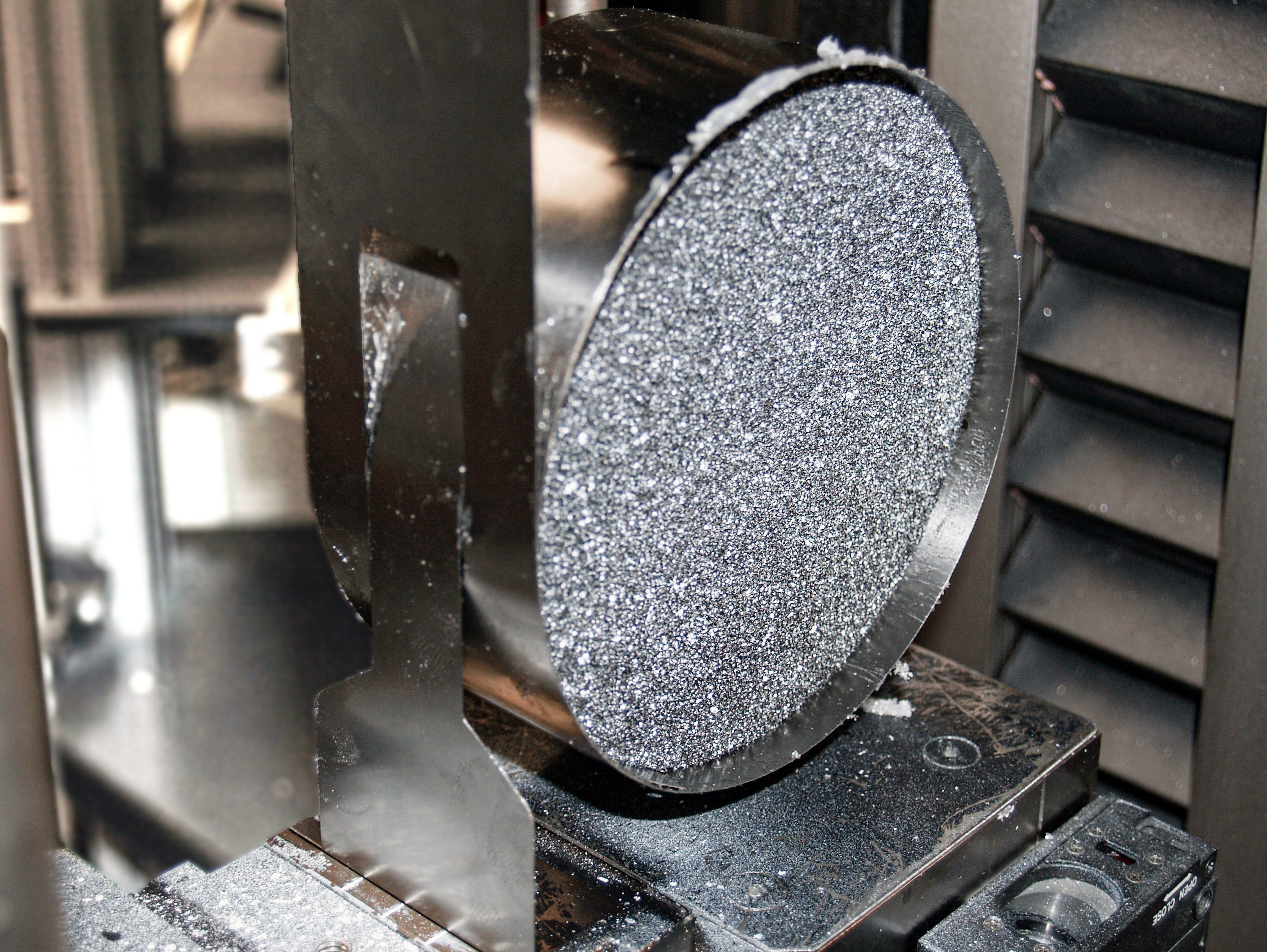
Researchers at Fraunhofer Institute say that they have developed improved methods to test and design polymeric hard foam components more safely and effectively.
According to the institute, plausible specifications for a hydrostatic tensile test are unknown and the balanced biaxial tensile test can be costly to perform. To solve these problems, the researchers have developed 2D and 3D balanced compression tests leading to results that are clearer and easier to interpret. When used with uniaxial tensile, compression, and torsion tests, the test data can help ensure reliable modelling and plausible extrapolations, which allow for the estimation of the unavailable hydrostatic tensile data.
In the test, the equibiaxial compression loading is realized in a conventional tensile testing machine, applying a circular disc as specimen and a sheet steel loop for load application. The resulting effort is comparable to standard tensile tests, and the 2D compression test represents an effective method for the first estimation of material behavior. While for precise modelling a hydrostatic compression test is essential, this can lead to destruction of the cells and hydrostatic collapse of the overall structure, Fraunhofer said.
This new method allows components containing hard foams to be designed more reliably and more cost-effectively, and allows designers to take safe decisions about the choice of material for specific applications, ruling out unexpected cases of failure in the application.
Fraunhofer says that the method could also be used with materials such as ceramic foams, aerated concrete, soil, and sintered and granular materials.
This story uses material from Fraunhofer, with editorial changes made by Materials Today. The views expressed in this article do not necessarily represent those of Elsevier.


